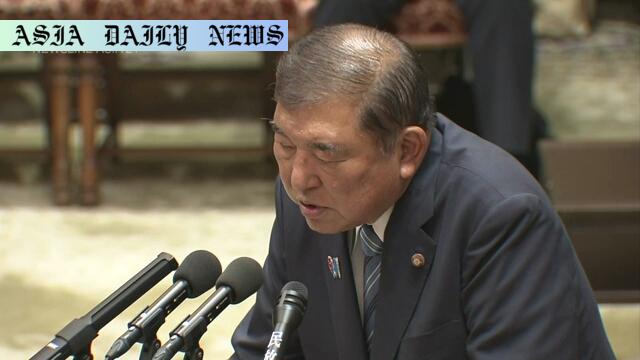Auto Tariffs: Japan’s Prime Minister Ishiba Shigeru urges Trump to sign an executive order for tariff cuts, fostering bilateral growth.
- Ishiba Shigeru urges President Trump to finalize auto tariff cuts post bilateral agreement.
- Lower House debates reveal opportunities and challenges for Japan-US trade relations.
- Concerns of political and economic fairness introduced by opposition leader Noda.
- Ishiba highlights collaboration reforms, transparent practices, mutual economic growth.

Japan’s Strategic Focus on Auto Tariffs
In a significant development for international trade, Japan’s Prime Minister Ishiba Shigeru has emphasized his nation’s commitment to urging U.S. President Donald Trump to expedite the signing of an executive order to reduce auto tariffs. This follows the recent agreement between the two nations to foster economic growth through measures benefiting bilateral trade. The initiative is not only a testament to Japan’s goal of securing its automotive industry’s interests but also underscores the broader implications of U.S.-Japan economic ties.
During the Lower House budget committee discussion, key political figures debated the potential outcomes and challenges of implementing the bilateral agreement. Key to this discussion was Ishiba’s assertion that the deal promises a “win-win relationship.” He elaborated on how the collaboration would merge technological advancements, labor, and capital from both nations to benefit global markets. Substantial job creation in the U.S. and stability in Japan’s job market were among the projected outcomes.
Concerns Over Agreement Implementation and Political Fairness
However, achieving these goals is not without obstacles. Significant concerns were raised regarding the complexity of implementing such agreements. Some political opposition figures like Noda Yoshihiko, leader of Japan’s Constitutional Democratic Party, expressed skepticism about the U.S.’s intentions. He highlighted the lack of a formal document outlining the agreement, cautioning that the Trump administration might exploit this ambiguity to Japan’s detriment.
This sentiment resonates with broader debates over Japan’s reliance on verbal agreements with the U.S. administration. Ishiba defended the decision to forego a formal document, arguing that drafting one could delay critical tariff reductions. While his stance seems utilitarian, Noda urged that clear documentation serves as a safeguard against any misinterpretations or potential economic exploitation. The debate underscores the balance between swift action and long-term legal security.
Political Reform and Historical Context
Beyond the tariff conversation, issues of political reform were also brought up. Noda advocated for banning donations from corporations and organizations to increase transparency and prevent undue influence on politics. Ishiba acknowledged the need for fairness in governance and expressed willingness to engage in dialogue with other political leaders to achieve these goals.
Looking at a broader historical context, Prime Minister Ishiba touched upon his plans for an 80th-anniversary message commemorating the end of World War Two. He stressed the importance of educating future generations about the horrors of war to prevent its recurrence. His remarks give a glimpse into Japan’s long-term vision of fostering peaceful international relationships, underpinned by mutual respect and collaboration.
Conclusion: A Vision for Mutual Prosperity
The ongoing negotiations and discussions between Japan and the U.S. over auto tariffs represent more than just economic agreements; they reflect a deeper commitment towards building a stable and prosperous bilateral relationship. However, navigating the challenges of implementation, overcoming skepticism, and ensuring fairness in political practices remain daunting tasks. Ishiba’s leadership continues to play a pivotal role in steering these initiatives towards success, ensuring that both nations gain from this alliance without compromising either’s economic or social stability.



Commentary
Bridging Economic Gaps through Diplomacy
The Japan-U.S. negotiations on auto tariffs highlight an intricate balance between diplomacy and national economic interests. Prime Minister Ishiba Shigeru’s proactive approach to securing tariff reductions demonstrates his understanding of the importance of the automotive industry in Japan’s economy. By encouraging bilateral collaboration, he aims to create job opportunities in the U.S. and uphold stability at home, reinforcing the notion of a balanced and equitable trade relationship.
The Role of Transparent Agreements
However, the absence of a formal agreement raises valid concerns about the durability of commitments made during negotiations. Opposition voices like Noda Yoshihiko’s provide a necessary check, questioning the reliance on verbal assurances, especially under an unpredictable administration like Trump’s. This raises an essential question about whether speed should take precedence over clarity and long-term trust. Transparency and documentation could serve as binding safeguards against future misinterpretations.
Expanding on Political Reforms
Beyond economic issues, the discussions on political reform add depth to the broader objectives of fairness and integrity in governance. The call to eliminate corporate and organizational donations could signal a shift towards greater transparency in Japanese politics. Ishiba’s willingness to engage in these dialogues reflects a broader commitment to ethical leadership, which could pave the way for significant reforms benefiting society at large.
Preserving Historical Lessons
Finally, Ishiba’s plans to release a message marking 80 years since World War Two’s end remind us of the importance of historical accountability. Such initiatives not only honor the past but also serve as cautionary tales for the future. The inclusion of diverse perspectives can add richness to this message, resonating with both domestic and international audiences. Ultimately, Ishiba’s multidimensional approach—from economic strategies to political reforms—illustrates a comprehensive vision for progress.